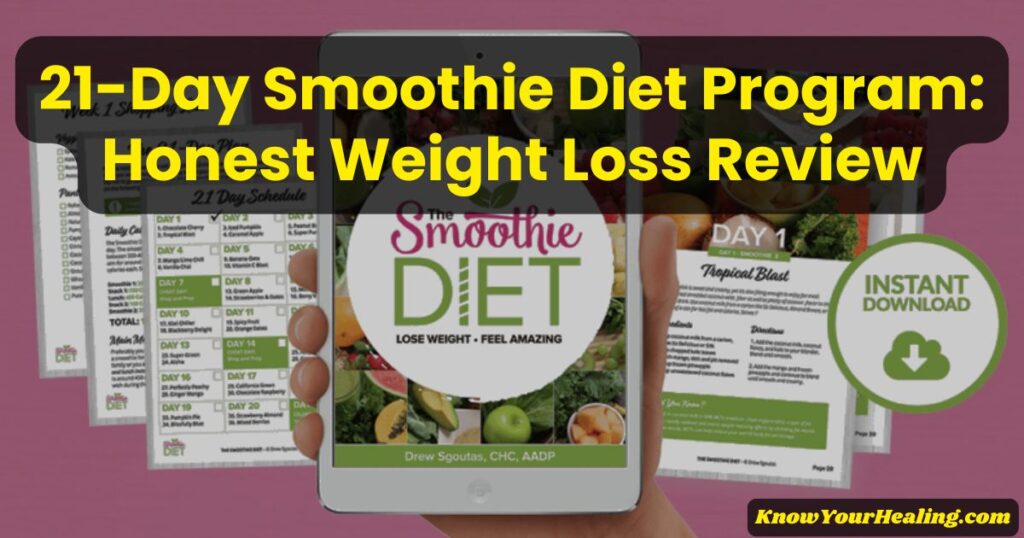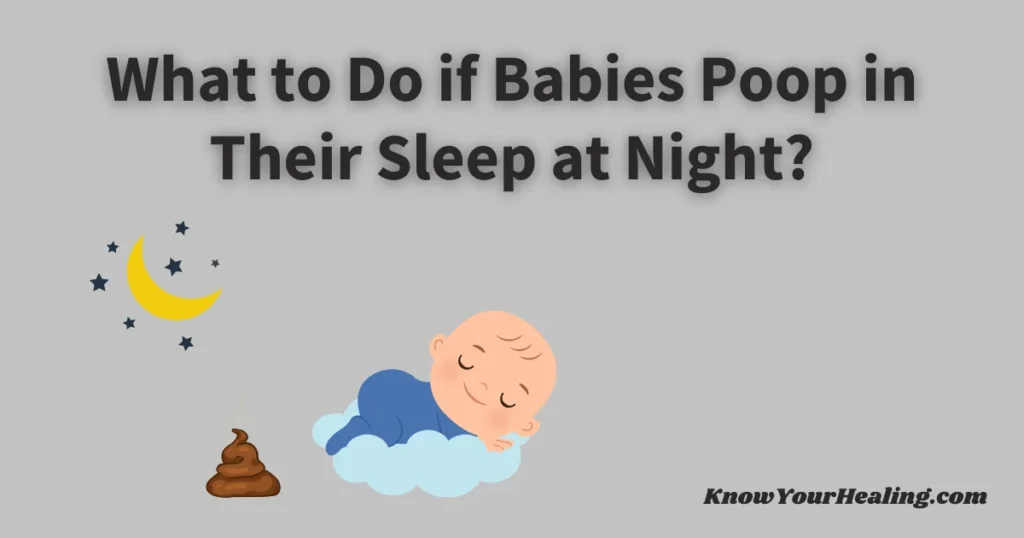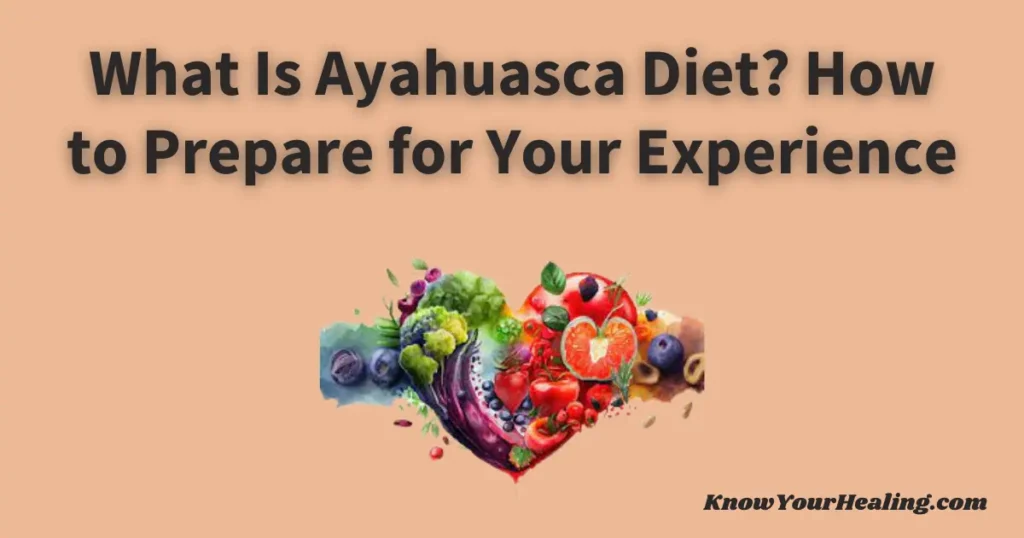The 21-day smoothie diet for weight loss has become one of the most popular programs for individuals seeking rapid results and improved health habits.
Many dieters wonder if swapping meals for smoothies actually leads to real, lasting weight loss—or if it merely ends up as another short-term fix that fizzles out.
This review provides a detailed examination of Drew Sgoutas’ 21-Day Smoothie Diet Program, exploring user results, potential health risks, and whether the program’s substantial claims are substantiated.
The program claims you can drop serious pounds by replacing two meals a day with nutrient-rich smoothies, following a set plan and recipes.
You’ll get the scoop on what’s actually in these smoothies, how the nutrition compares to expert advice, and honest feedback from folks who finished the 21-day challenge.
The review also addresses safety concerns, sustainability, and whether it can accommodate different lifestyles or meet various health needs.
(This article contains affiliate links. If you purchase through these links, we may earn a small commission at no extra cost to you.)
What the 21-Day Smoothie Diet Plan Is All About
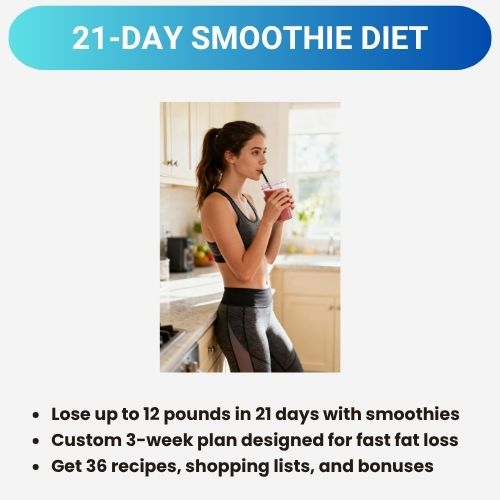
The 21-day smoothie diet replaces two meals a day with nutrient-packed smoothies, while maintaining one solid meal and incorporating some healthy snacks. The plan achieves a calorie deficit through portion control and includes ingredients such as leafy greens and fruit.
The Core Idea Behind the 21-Day Diet
Health coach Drew Sgoutas designed the smoothie diet to help boost weight loss with structured meal plans. The main idea is to swap regular meals for smoothies packed with essential nutrients.
The program offers 36 smoothie recipes using things like:
- Fresh fruits and leafy greens
- Coconut milk and chia seeds
- Greek yogurt and peanut butter
- Whole foods and healthy fats
This setup works well for busy moms and professionals who want to eat healthy without hours in the kitchen. The diet emphasizes nutrient-dense options that support overall health, while reducing consumption of processed foods.
Some people also pair this program with the audiobook “10-Day Green Smoothie Cleanse” by JJ Smith, which can be accessed through Audible‘s free trial.
How the 21-Day Smoothie Diet Works Step by Step
The 21-day smoothie diet plan follows a clear structure over three weeks. You drink two smoothies a day as meal replacements, eat one solid meal, and have two low-calorie snacks.
Daily Schedule:
- Morning: Green smoothie with spinach and fruit
- Lunch: Balanced meal with whole grains and protein
- Dinner: Fruit smoothie or solid meal
- Snacks: Two snacks under 200 calories each
The program provides you with shopping lists and meal plans to make preparation easier. You can also start with a 3-day detox, where smoothies replace all meals except snacks.
There’s one cheat day a week where you eat more normally, but still focus on whole foods. That bit of flexibility makes it easier to stick with the plan.
What Makes Smoothies Effective for Weight-Loss Plans
Smoothies help control calorie intake while providing fiber to keep you feeling full. The liquid format lets your body quickly absorb nutrients from all those fruits and greens.
Key Benefits:
- Lower calorie intake than most usual meals
- More fiber to keep you satisfied
- Nutrient-dense ingredients for better health
- Easy portion control
Still, smoothies sometimes don’t fill you up like solid food, which can leave you hungrier between meals. The meal replacement approach typically works best when combined with regular physical activity and adequate hydration.
Meal Replacement vs. Solid Food — Finding Balance
The plan combines meal replacements with one solid meal per day to maintain balance. That way, you get variety and avoid risks that come with all-liquid, low-calorie diets.
Solid Meal Guidelines:
- Go for whole grains and lean proteins
- Include healthy fats like nuts or avocado
- Load up on veggies and nutrient-rich foods
- Watch your portions for better results
This balance helps keep your blood sugar levels steady and provides you with enough energy for the day. If you have health issues, it’s wise to consult a dietitian before making changes.
Is It a Long-Term Solution or Just a Quick Fix?
Meal replacement diets like this often struggle to last. Some research suggests that you might regain weight once you return to regular eating.
The 21-day format serves as a brief reset, rather than a lasting change. To maintain your results, you’ll need to ease back into balanced meals and apply what you learned along the way.
Long-term Success Factors:
- Slowly return to balanced meals
- Stick with whole foods
- Stay active
- Focus on lasting healthy habits

Inside the Smoothie Recipes — Ingredients, Nutrition & Benefits
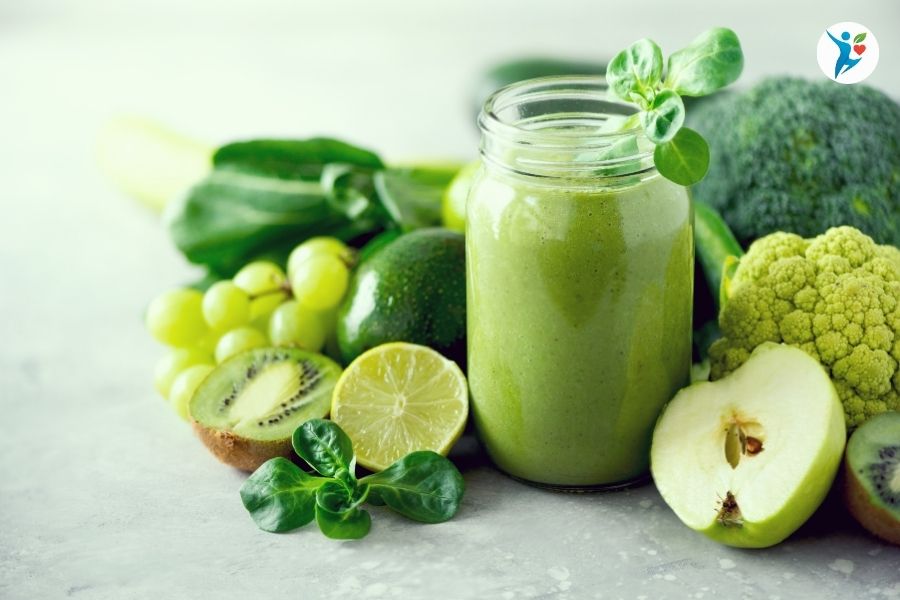
The 21-day smoothie diet focuses on nutrient-rich ingredients that help you consume fewer calories while still meeting your nutritional needs. Each smoothie packs in healthy fats, protein, and fiber to keep your energy levels up and cravings at bay.
The Role of Healthy Fats and Protein in Each Smoothie
Healthy fats play a significant role in the Smoothie Diet smoothies. Avocado, coconut milk, and nut butters provide essential fatty acids that support hormone function and aid in nutrient absorption.
These fats help you feel full longer. They slow digestion, so you don’t get blood sugar spikes that make you crave junk food.
Protein sources in the smoothie recipes include:
- Greek yogurt
- Plant-based protein powders
- Peanut butter
- Chia seeds
Getting enough protein helps you keep muscle while losing weight. It also boosts your metabolism, allowing you to burn more calories throughout the day.
Mixing healthy fats and protein makes these smoothies a more balanced meal. You’ll likely avoid the hunger and energy crashes that come with stricter diets.
Leafy Greens and Whole Foods for a Well-Rounded Diet
Leafy greens are the backbone of many of these smoothie recipes. Spinach, kale, and Swiss chard provide a wealth of nutrients without adding excessive calories.
These veggies bring in folate, iron, and vitamin K. They’ve also got antioxidants, which support your health and might help with inflammation linked to extra weight.
Drew Sgoutas really pushes whole foods over processed stuff. That means you’re getting more of the good nutrients your body needs.
Key whole food ingredients include:
- Fresh fruits (like berries, bananas, apples)
- Raw veggies (spinach, cucumber, celery)
- Natural sweeteners (dates, stevia)
- Unsweetened plant milks
Sticking to whole foods can help reset your taste buds. Many people report that they crave less processed food after completing the program.
How Fiber and Chia Seeds Control Hunger
Fiber plays a massive role in hunger control in this diet. Chia seeds, for example, add both soluble and insoluble fiber, and they expand in your stomach to help you feel full.
One tablespoon of chia seeds provides approximately 5 grams of fiber. That’s a solid chunk of the daily recommendation, which typically ranges from 25 to 35 grams.
High fiber slows down digestion and helps keep blood sugar levels stable. That can help you avoid the crashes that lead to overeating or bad food choices.
Many folks find that fiber-rich smoothies keep them satisfied for three or four hours. That makes it easier to stick with the meal plan without feeling starved.
Low-Calorie Snacks and Herbal Teas to Support the Plan
The plan suggests consuming low-calorie snacks between smoothies to maintain steady energy levels. These snacks are low in calories but still provide nutrients and fiber.
Herbal teas, especially green tea, go well with the smoothies. They keep you hydrated and may even give your metabolism a little nudge.
Recommended snack options include:
- Raw veggies with hummus
- Apple slices with almond butter
- Mixed berries
- A handful of nuts
These snacks help you avoid getting too hungry—so you’re less likely to overeat at your one solid meal.
Essential Nutrients That Skyrocket Energy Levels
The smoothie recipes are loaded with nutrients that can boost your energy. B vitamins from greens help your cells make energy and keep your nervous system humming.
Iron from spinach and other greens helps move oxygen around your body. Magnesium from chia seeds and spinach supports your muscles and energy metabolism.
The “10-Day Green Smoothie Cleanse: Lose up to 15 Pounds in 10 Days!” audiobook by JJ Smith offers more ideas for energy-boosting smoothies. You can check it out with a free Audible trial.
Natural sugars from fruit give you quick energy, and the fiber slows it down to prevent crashes. That mix helps you feel steady without needing coffee or energy drinks.

Results, Risks, and Expert Opinions — An Honest Review
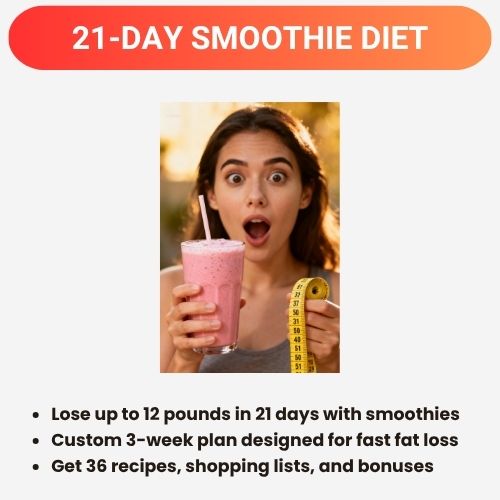
People who try the 21-day smoothie diet for weight loss see mixed results. Some individuals drop a significant amount of weight, but there are also risks of missing out on specific essential nutrients. Health experts always advise weighing the benefits and risks before starting any meal replacement plan.
What Real Users Say — Personal Experience & Pounds Lost
People who’ve done the Smoothie Diet report losing anywhere from 4 to 15 pounds in three weeks. One person even shared an 11.6-pound loss after finishing the whole thing.
The first week typically begins with a 3-day detox, where every meal is replaced with smoothies. Most people encounter some bumps—such as headaches or cravings—as their bodies adjust to less solid food and fewer calories.
Common Week-by-Week Results:
- Week 1: 3-5 pounds lost (mostly water weight)
- Week 2: Another 3-4 pounds gone
- Week 3: 2-4 more pounds lost
Many participants notice an improvement in energy and reduced bloating after the first few days. The meal replacement strategy helps you cut calories, but you’re still getting nutrients from all those leafy greens and fruits.
Health Benefits Beyond Weight Loss
People trying the 21-day smoothie diet often notice more than just weight changes. Some mention clearer skin, better sleep, or fewer sugar cravings.
Common ingredients like chia seeds, Greek yogurt, and coconut milk deliver healthy fats and fiber. These nutrients help maintain steady blood sugar levels throughout the day.
Reported Benefits Include:
- Increased energy levels
- Better digestion
- Reduced inflammation
- Improved skin appearance
- Enhanced mental clarity
The plan leans heavily on whole, nutrient-rich foods. That can help establish healthier eating habits for the long term.
For busy moms or professionals, having set meal plans and shopping lists makes sticking to healthier options a lot simpler.
Possible Health Risks and When to Seek Advice
Low-calorie diets like this one may not provide enough energy for everyone, especially those who’re active. Going too restrictive for too long can lead to nutrient deficiencies.
Some risks are fatigue, muscle loss, or a slower metabolism. If you have a medical condition, it’s advisable to consult your doctor before starting any weight loss plan.
When to Seek Professional Advice:
- History of eating disorders
- Diabetes or blood sugar issues
- Pregnancy or breastfeeding
- Taking medications
- Chronic health conditions
A registered dietitian can help you determine if this diet aligns with your health needs. Replacing meals with smoothies may not be suitable for everyone’s lifestyle or health status.
Expert Insight from Health Coach Drew Sgoutas
Health coach Drew Sgoutas created the Smoothie Diet as a way to make weight loss more sustainable and achievable. He focuses on smoothie recipes that balance nutrition and keep calories in check.
Sgoutas tells people to eat one solid meal a day alongside their smoothies. That way, the plan isn’t too strict, but it still helps with weight loss.
He also encourages portion control and regular exercise. Sgoutas views this diet as a piece of a balanced lifestyle, not just a quick fix.
Making an Informed Decision for Your Health Goals
The 21-day diet can give your weight loss a jump start if you use it wisely. However, if you want results to last, you’ll need to return to regular meals with whole grains and balanced portions.
Some people find it helpful to explore additional resources, such as the audiobook “10-Day Green Smoothie Cleanse: Lose up to 15 Pounds in 10 Days!” by JJ Smith. You can try it for free with a 30-day Audible trial if you’re curious about green smoothies and healthy changes.
This plan works best for individuals who prefer structure and can adhere to meal plans. Ultimately, lasting weight loss is about changing habits, not just following a single program for a few weeks.

Frequently Asked Questions
People often have questions about how the 21-day smoothie diet works and what they can expect to gain from it. Concerns range from program basics to what foods you can eat or how much weight you might lose.
The 21-Day Smoothie Diet originates from health coach Drew Sgoutas. You swap out two meals each day for nutrient-rich smoothies and keep one regular meal plus two snacks.
The plan is an e-book with 36 smoothie recipes, meal plans, and shopping lists. Most people use smoothies for breakfast and lunch for three weeks.
There’s also a 3-day detox option at the start. For those three days, you drink smoothies for every meal and add two low-calorie snacks.
Weight loss from a smoothie-only week depends on your daily calories. Cutting 500 to 1,000 calories a day can result in losing about 1 to 2 pounds per week.
Going all-smoothie for a week might yield quick results if your calorie intake is low. However, it can also leave you feeling hungry, tired, or lacking in nutrients.
It’s essential to ensure your smoothies contain sufficient protein, healthy fats, and carbohydrates to keep your body functioning optimally. Otherwise, you might lose muscle instead of fat.
The 21-21-21 rule isn’t part of the smoothie diet. It’s a general idea—21 minutes of exercise, 21 grams of protein per meal, and drinking 21 ounces of water before you eat.
The 21-day smoothie diet is different. It means swapping meals for smoothies for 21 days to build better eating habits.
The goal is to help your body crave healthier foods instead of processed stuff. Still, there isn’t a lot of scientific evidence proving it really changes cravings for good.
Some refer to the 21-day smoothie diet as an extreme weight loss plan because it promises significant changes in a short period. The CDC states that any diet claiming rapid results is likely a fad.
This program typically provides approximately 1,500 calories per day through smoothies, one meal, and snacks. That’s less than most adults need to maintain their weight.
Replacing two out of three meals with liquids is a big shift. You may notice quick changes, but it’s challenging to maintain them in the long term.
Dropping 20 pounds in a month means cutting way more calories than experts recommend. Most health professionals say losing 1 to 2 pounds per week is the safest and most sustainable approach.
The 21-day smoothie diet may help some people lose weight quickly, primarily because it’s so low in calories. But honestly, a lot of that first weight is probably just water, not fat.
Losing weight too fast can lead to muscle loss, nutrient shortages, and a sluggish metabolism. Most people who lose weight quickly end up gaining it back when they return to their normal eating habits.
The smoothie diet cuts out processed foods, refined sugars, and high-calorie snacks for 21 days. If you’re tempted to add extra nuts, seeds, or protein powders, it’s best to skip them, as they can quickly increase the calorie count.
Anything loaded with added sugars gets in the way. Candy, baked goods, sodas, and those sweet drinks—yeah, they’re off the list.
When you eat regular meals or snacks, opt for light and low-calorie options. Fried stuff, fast food, or big servings? Those will totally throw off your calorie deficit, which is kind of the whole point if you’re aiming for weight loss.

